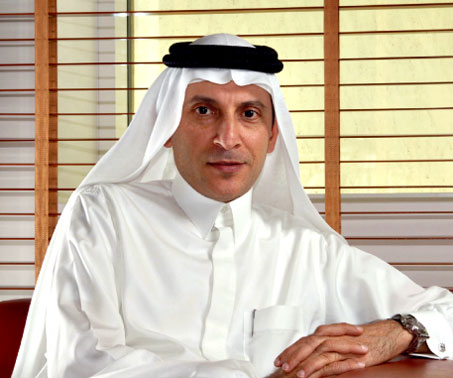
Al Baker: “Our entry into the oneworld Alliance and the opening of Hamad International Airport will revolutionise our capacity to bring international business to Doha’s doorstep.”
Qatar is very much a ‘next generation’ aviation leader, with one of the youngest fleets in the skies and a cutting-edge new hub – Hamad International Airport (HIA) – soon to open. Akbar Al Baker, CEO, Doha International Airport and Qatar Airways, has been instrumental in shaping the country’s dynamic aviation growth. He has led the ambitious growth of Qatar Airways, which was launched in 1997 and in its relatively short history has quickly established a reputation for innovation, quality and excellence. The airline currently flies a fleet of 130 aircraft to over 130 destinations across six continents. Al Baker is also leading the development of the US$15.5 billion (€11.5bn) Hamad International Airport.
After graduating in Economics and Commerce, Al Baker worked at various levels in Qatar’s Civil Aviation Directorate before joining Qatar Airways in 1997. “When you’re the CEO of a national flag carrier and building a new airport hub, it really helps to understand how the authorities think and operate. The knowledge and relationships I have carried forward from my time there are still invaluable today,” he explained.
To appreciate how important aviation is for Qatar, one only needs to look at a map. The country sits at an important crossroads, but in terms of short to medium distance, it is also relatively isolated. Aviation allows Qatar to strike out beyond the desert and the Gulf, to new markets in other countries and other continents. Increasing aviation capacity is, therefore, a core consideration in Qatar’s national strategy for growth. “We are privileged to receive unique levels of support and encouragement from our national leaders and the Qatari authorities,” commented Al Baker.
It is immediately apparent that he is a man with extraordinary vision and an outstanding eye for detail. Doha International Airport (DIA) – host of ACI Airport Exchange 2013 – was built in the 1940s as little more than a landing strip. Over the years it has undergone dramatic infrastructure and operational changes, both to keep pace with the growth of Qatar’s domestic economy, and to remain competitive as an international hub. It has almost doubled capacity in the past three years alone. These upgrades have enabled DIA to attract more airlines and passengers every year. In 2012 it handled more than 21 million passengers from 35 international airlines, in an airport built with an annual capacity of 14 million. “It is still an outstanding airport, but moving to HIA will remove many of the challenges we face on a daily basis,” explained Al Baker. “We estimate that around 23.1 million passengers will have used DIA by the end of 2013, representing an annual growth rate of just over +9%. HIA will have an initial capacity of around 25 million passengers, rising to nearly 50 million by the time it is fully operational in 2015.”
Commenting on the hosting of ACI Airport Exchange 2013, Al Baker added: “DIA is extremely pleased and honoured to be chosen to host ACI Airport Exchange 2013. Qatar Airways and the State of Qatar are proud of our hospitality and we warmly welcome the aviation world to our home nation for a conference of great debate, great discussion and, of course, great hospitality.”
Hamad International Airport: A new chapter
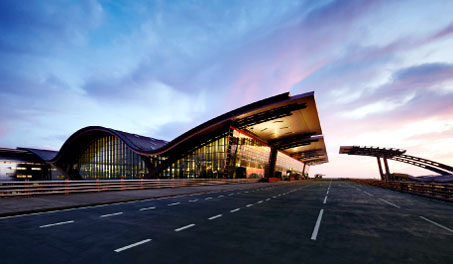
Hamad International Airport will have an initial capacity of around 25 million passengers, rising to nearly 50 million by the time it is fully operational in 2015.
The opening of Hamad International Airport in early 2014 will herald an exciting new chapter in Qatar’s aviation history. Qatar is a small country, with a population of two million, whose natural resources have provided wealth beyond imagination. The vision of its current leaders has enabled it to take full advantage of this, setting it on the path to a developed, sustainable, knowledge-based economy. “A world-class hub and five-star international airline are vital and complementary elements of this drive for economic growth,” said Al Baker. “You are right to say that HIA heralds a new chapter in Qatari aviation; the unprecedented growth of Qatar Airways since its relaunch in 1997 was really only the preluImportantly, HIA will provide the airline with the capacity tode. Our entry into the oneworld Alliance and the opening of Hamad International Airport will revolutionise our capacity to bring international business to Doha’s doorstep.” Meanwhile, Qatar’s international profile will be raised further in 2022 when it hosts the FIFA World Cup.
Qatar Airways at a glance
Year relaunched: 1997
Annual passengers: 17 million (2012)
Number of destinations: 130+
Fleet size: 130
Average age of fleet: Four years
Orders and options: 250+ (including 13 A380s)
Alliance membership: oneworld
Careful not to reveal too much of the strategy in advance of the opening of the new airport, Al Baker said there are some surprises in store. What we do know is that the five-storey terminal will have 138 check-in counters spread across five islands; 14 seated check-in areas for Qatar Airways First Class passengers; 16 check-in counters for Qatar Airways Business Class; and 108 counters for Qatar Airways Economy and all other airlines. The strategy does not include off-site processing solutions such as hotel-based check-in facilities, or downtown bag drop. The reasoning is that the airport considers such solutions to be capacity driven and most useful where there is insufficient capacity, whereas HIA will have sufficient capacity for efficient passenger and baggage processing.
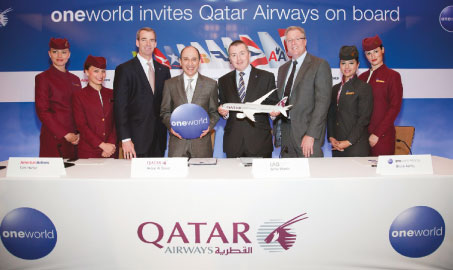
Celebrating Qatar Airways joining the oneworld Alliance are: American Airlines’ Chairman and Chief Executive Tom Horton, Chairman of the oneworld Governing Board; Qatar Airways CEO Akbar Al Baker; IAG Chief Executive Willie Walsh; and oneworld CEO Bruce Ashby.
As its home and hub, HIA is central to the future of Qatar Airways, enabling it to expand its operations and service its fleet in a way that just isn’t possible currently. One example is the new maintenance hangar, which is designed to accommodate 13 aircraft simultaneously, including one of Qatar Airways’ new A380s (it has 13 on order, the first to be delivered in spring 2014). The airline currently has orders for more than 250 aircraft worth over US$50 billion (€37bn), including 787s, 777s, A320s, A350s and A380s.
Al Baker speaks passionately about the passenger experience, and anyone travelling through the new airport will immediately recognise the efforts made to enhance the end-to-end experience for all travellers – arriving, departing or transiting. HIA will be the home of Qatar Airways – not just somewhere it parks its aircraft – and passengers will benefit from the airport’s progressive approach, from dedicated check-in and passport control desks, to some of the most luxurious lounge facilities in the world. The intention is that HIA will not only enhance passengers’ travel experience, but change their expectations altogether. The airport combines a unique architectural design with cutting-edge technology to provide a seamless, five-star passenger experience. Recent technological advances have been fully integrated into the design and will be found everywhere at HIA – from heavy machinery in the maintenance hangar, to e-gates at passport control, to the fully automated baggage transfer system. “We are confident that HIA will be the best airport in the world and hopeful that it will be recognised as such by the industry. But the real test will be whether we continue to attract even more passengers and airlines,” commented Al Baker.
Europe remains key element of Qatar strategy
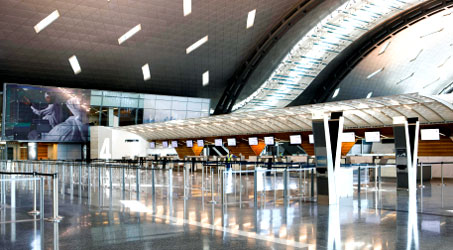
HIA will be the home of Qatar Airways and passengers will benefit from the airport’s progressive approach, from dedicated check-in and passport control desks, to some of the most luxurious lounge facilities in the world.
People speak pluralistically about ‘the Gulf carriers and airports’ as the bright beacons of global aviation; their exponential growth is widely and regularly reported. In a highly competitive environment, Qatar Airways has achieved phenomenal route expansion, averaging +30% growth each year. It has continued its dynamic growth trajectory in 2013, adding 10 new destinations, and there are plans to add a further 12 new destinations in each of the next five years. The route development strategy focuses on opening up services to key business and leisure destinations, as well as markets that are under served and need more air access. During the first half of 2013, Qatar Airways launched six new routes from Doha – Najaf and Basra in Iraq, Gassim in the Kingdom of Saudi Arabia, Salalah in Oman, its fourth US gateway of Chicago, and the Cambodian capital Phnom Penh. The second half of 2013 has seen further destinations launched, including Sulaymaniyah in Iraq, the Ethiopian capital Addis Ababa, Chengdu in China and Clark International in the Philippines. The airline also recently announced that it will begin flights to Hangzhou, China on 20 December. Of course there are many more new routes planned, which have yet to be disclosed. “The days when some in the industry viewed Qatar Airways as an upstart are hopefully behind us – we have been setting global standards for service and quality for many years now. Other carriers can complain or compete – it’s as simple as that,” asserted Al Baker. “We enjoy good relations with the other Gulf carriers. There is a mutual interest in maintaining the Middle East’s hub status and reputation for quality airlines.”
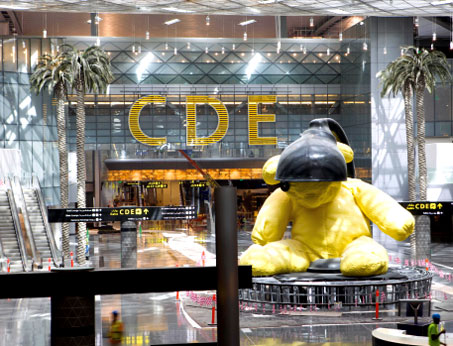
Creative use of space at HIA will see true engagement with travellers and a focus on providing a memorable experience of the airport. This will include collaborations with local businesses and cultural groups to bring the terminal alive, with special offers, exhibitions and live performances.
Importantly, HIA will provide the airline with the capacity to connect with more European airports than ever before, and the region remains very much a key part of its strategy. “We have every intention of maintaining our position as one of the world’s fastest-growing airlines, so we will continue to work hard on adding new destinations and improving connectivity,” explained Al Baker. “Emerging markets rightly receive a lot of attention and many airlines have chosen to scale down their involvement in Europe. But Europe is still an incredibly important destination for both business and leisure, which is why we have chosen to expand our European operations in a concerted push over the past three years. We now fly to 30 destinations across the continent, and our first A380 will be deployed to a European destination.”
Doha International Airport at a glance
Annual passengers (2012): 21 million
Forecast 2013 throughput: 23.1 million
Annual growth 2012-2013: +9%
Number of airlines: 35
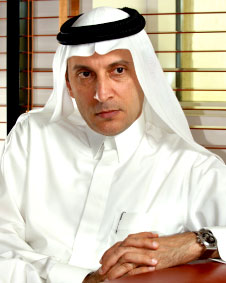
Al Baker: “We are confident that HIA will be the best airport in the world and hopeful that it will be recognised as such by the industry. But the real test will be whether we continue to attract even more passengers and airlines.”
Interestingly, each of the Gulf carriers is pursuing a different strategy, and this was clearly demonstrated when Qatar Airways joined oneworld at the end of October, making it the only major Gulf carrier to join a global airline alliance. It is a bold move, which shows that Qatar Airways is keen to work with other carriers when it helps improve passenger service. It is also another significant landmark in Qatar Airways’ history, strengthening its competitive offering and delivering a truly global network served with airline partners from every region.
“I wasn’t prepared to join an alliance for the sake of it – it had to be the right decision at the right time for Qatar Airways. That moment has finally arrived and I am excited about our future as part of a truly global service network with oneworld,” said Al Baker. “Qatar Airways flew to 128 destinations by October 2013, but this effectively increased overnight to over 800. Our improved connectivity with other five-star airlines means that journeys should be shorter, cheaper and more enjoyable. We have always held to the principle that superior service and quality wins out in the end – this move is entirely consistent with that vision and will help us to drive up standards even further.”
Revolutionising the airport experience
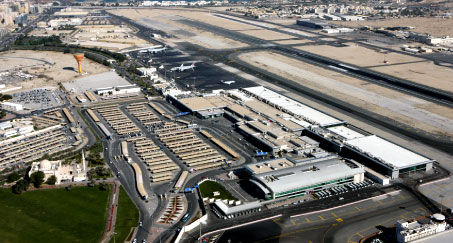
Al Baker: “HIA will offer a completely new, seamless, five-star experience from the car park through to the departure gate. We want passengers to look forward to spending time with us and consciously choose routes which connect through HIA.”
Al Baker speaks with conviction about the opportunities to maximise commercial revenues. The retail and food & beverage areas at HIA total 25,000sqm – that’s 12 times more than at DIA. The space includes duty free and luxury designer outlets, spa and beauty treatments, five-star hotels and even extensive sports facilities. “Airports are finally beginning to recognise the retail opportunity presented by a ‘captive’ market of passengers in transit. They are channelling huge investment into developing retail facilities and many expect returns of up to 50% of their total revenue,” stated Al Baker. “HIA will be ahead of this trend because we want to revolutionise the airport experience – not just provide a few more shops for ‘captive’ passengers.”
Hamad International Airport at a glance
Initial annual passenger capacity (2014): 25 million
Fully operational passenger capacity (2015): 50 million
Initial annual cargo capacity (2014): 1.4 million tonnes
Fully operational cargo capacity (2015): 2.5 million tonnes
Number of runways: 2
Passengers will also notice a real sense of place. Creative use of space at HIA will see true engagement with travellers and a focus on providing a memorable experience of the airport. This will include collaborations with local businesses and cultural groups to bring the terminal alive, with special offers, exhibitions and live performances.
“HIA will offer a completely new, seamless, five-star experience from the car park through to the departure gate. We want passengers to look forward to spending time with us and consciously choose routes which connect through HIA,” added Al Baker.
Meanwhile, the area around HIA will become known as Airport City – a living town which both supports airport operations and benefits from proximity to an international hub. This 100-hectare area will be reserved for sustainable commercial development, including a free trade zone, business park, luxury hotels and a retail mall.
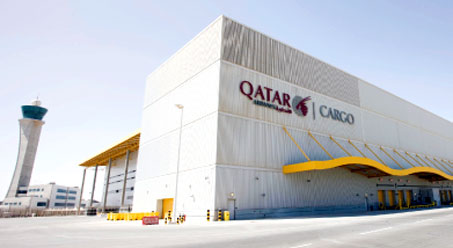
Hamad International Airport will have an initial annual cargo capacity of 1.4 million tonnes, rising to 2.5 million tonnes when it is fully operational in 2015.
Looking forward, Al Baker believes that the growth of powerful alliances and the emergence of markets such as China and India mean that the industry is only set to become more competitive. But the nature of that competition will change. Passengers have more choice than ever regarding which airline they fly with and where they fly from. Only a constant drive to improve standards and offer exceptional service will enable airlines and airports to remain competitive, and Qatar remains firmly ahead of the curve. “Running a national airline, an airport, and the construction of a new regional hub is a lot of hard work! But I am sustained by the central importance of our mission to Qatar’s future. So I suppose my inspiration derives both from pride in what we are doing for our country, and from the daily excitement of leading one of the world’s fastest-growing businesses.”







